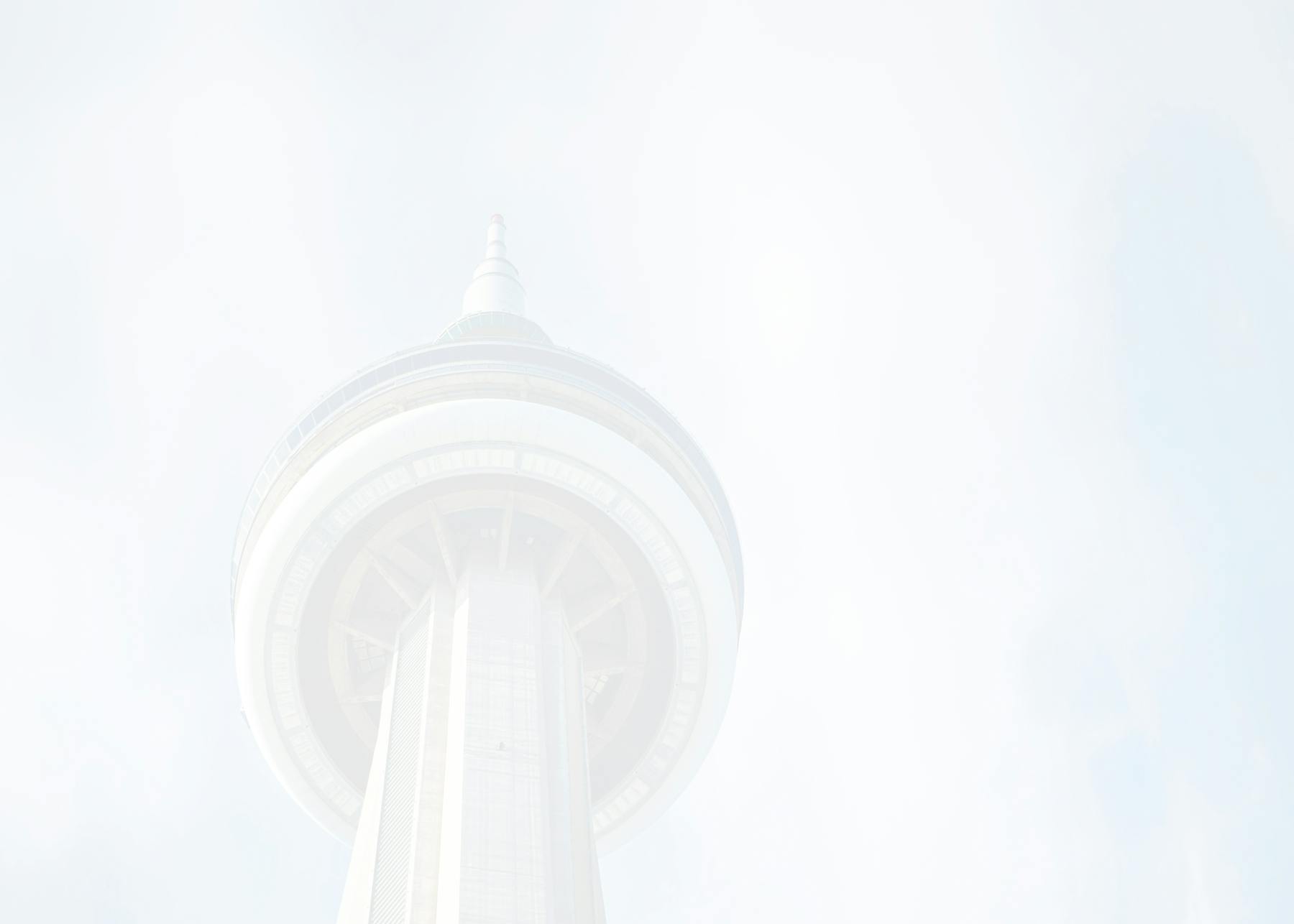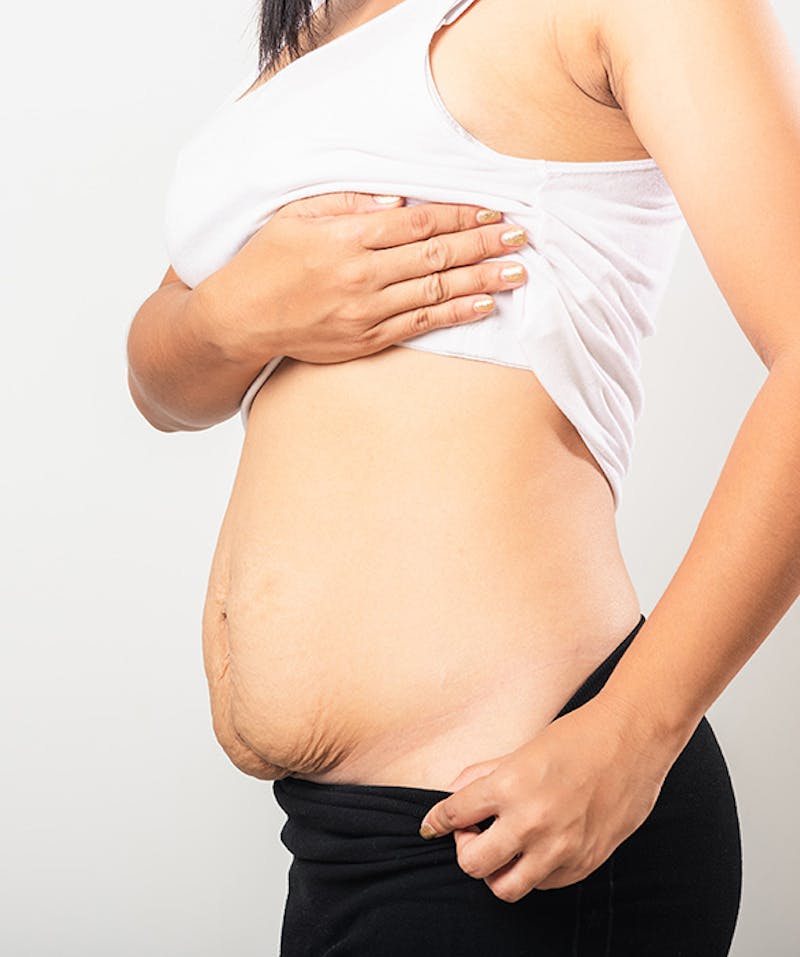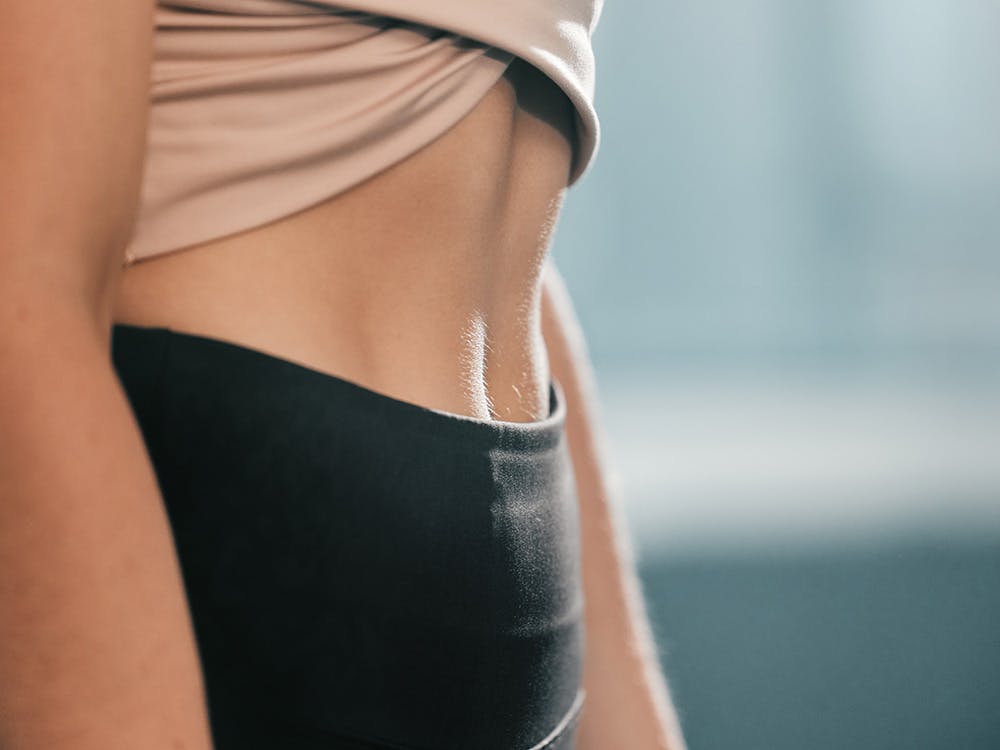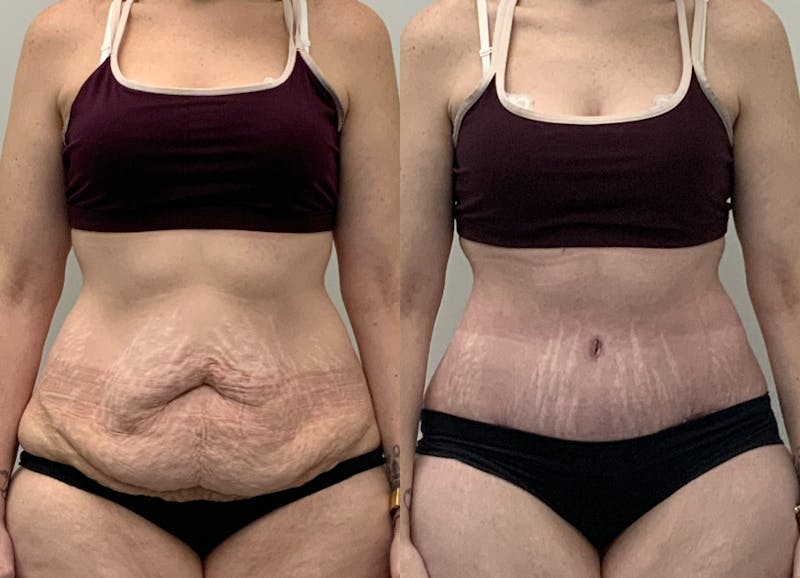Your Custom Tummy Tuck Procedure in Toronto
A tummy tuck, also known as an abdominoplasty, is a surgical procedure designed to remove excess skin and fat from the abdomen and to tighten the underlying muscles. The goal of a tummy tuck is to create a smoother, flatter, and more toned-looking abdomen.

What is a tummy tuck?
At the Canadian Plastic Surgery Centre in Toronto, Dr. Chivers is dedicated to providing his patients with personalized, comprehensive care to achieve the best possible results. With a passion for body sculpting and shaping, he offers procedures such as abdominoplasty to help individuals achieve their desired body contour.
Abdominoplasty, also known as a tummy tuck, is a popular plastic surgery procedure that can help individuals who struggle with loose belly skin from weight loss or pregnancy. While exercise can strengthen muscles, it may not tighten the skin in this area. However, many plastic surgeons take a “cookie-cutter” approach to tummy tucks, failing to consider factors such as scar placement, belly button shape, and natural curves and contours of the abdomen.
Dr. Chivers recognizes the importance of individualized care, and takes a comprehensive approach to abdominoplasty to achieve natural, sexy results. With a thorough analysis of each patient's unique body shape, he creates customized treatment plans to help them achieve their aesthetic goals.
Tummy Tuck at a Glance
Alternative Names
Abdominoplasty
Types of Anesthesia
General
Recovery Period
You can take a total of 2 weeks off from work after undergoing a breast lift surgery. However, it is important to avoid physical activity for a period of 6 weeks before resuming your routine activities. This recovery period allows your body to heal properly, reduces the risk of complications, and ensures the best possible results from the surgery.
Cost
$9,500-13,500
Tummy Tuck and Future Pregnancies
It is important to note that a tummy tuck procedure does not typically affect a woman's ability to have children in the future. However, women who plan to have children after the surgery may want to consider postponing the procedure until after they have finished having children, as additional pregnancies may lead to the recurrence of muscle separation and skin laxity in the treated area.
Suitable Candidates for a Tummy Tuck
Suitable candidates for a tummy tuck surgery include individuals of various body sizes who have experienced significant weight loss through diet, exercise, or bariatric procedures, as well as those who are post-pregnancy. If you have an excess amount of external fat or loose skin in your abdominal region, you may be a candidate for an abdominoplasty. At the Canadian Plastic Surgery Centre, Dr. Chivers will assess your individual situation and provide you with the best surgical options to help you achieve your goals.
Good candidates are:
- In good health
- At a stable weight and does not intend to lose additional weight
- Have excess skin or external fat in the abdominal region or flanks
- Individuals with stretch marks in the lower abdomen
- Have a weakened abdominal musculature
- Are non-smokers
- Have realistic expectations

Can a tummy tuck help me lose weight?
There is a common misconception that a tummy tuck is a weight loss procedure. However, this is not the case. Tummy tucks are performed to sculpt and tighten the abdominal area while maintaining a patient's current weight. While some excess external fat (subcutaneous fat) may be removed during the procedure, the amount of weight lost is not significant.
If you are looking to lose weight for health reasons, undergoing bariatric surgery (such as gastric bypass or gastric sleeve) or engaging in natural diet and exercise are viable options. These methods can contribute to weight loss by reducing fat within the abdominal compartment (visceral fat).
Subcutaneous vs. Visceral Fat: Differences and Health Implications for a Tummy Tuck
Subcutaneous fat and visceral fat differ in location and health implications. Subcutaneous fat is found beneath the skin and has limited health implications, while visceral fat is located between organs in the abdominal compartment and has been linked to increased risk of chronic illnesses. However, subcutaneous fat can be removed through cosmetic surgery procedures such as liposuction or excision, while visceral fat can only be lost through diet, exercise, or bariatric surgeries.
This is important to consider for patients seeking abdominoplasty to reduce abdominal girth. While subcutaneous fat can be removed through body contouring procedures, large abdominal girth caused by visceral fat can only be reduced through natural weight loss methods or bariatric surgery. Abdominoplasty is typically recommended for patients who have achieved significant weight loss and maintained a stable weight for at least six months.
Details of the Procedure
Tummy tuck surgery is a valuable option for individuals with various body sizes, especially those who have experienced significant weight loss through exercise, diet, or bariatric weight loss procedures (such as gastric bypass surgery) or post-pregnancy. Abdominoplasty can create a flatter abdomen, strengthen abdominal muscles, and eliminate stubborn fat.
During the procedure, the patient is put to sleep under general anesthesia, and the specific surgical area and scars depend on the type of abdominoplasty performed.

Types of Abdominoplasty (Tummy Tuck) Procedures
Abdominoplasty is a valuable option for individuals with excess skin, fat, and muscle weakening in the abdominal area due to weight loss or pregnancy. There are different types of abdominoplasty procedures that can be performed to address specific concerns.
Mini Abdominoplasty
This procedure is suitable for patients with excess skin and fat located below the belly button and pubic area, and no muscle weakening. It involves removing a small amount of skin and fat without moving the belly button, resulting in a small scar typically hidden at the bikini line.
Standard Abdominoplasty
This is the most common procedure, suitable for patients with loose skin, excess fat, and abdominal bulging due to muscle weakening. It involves a long incision at or below the bikini line from hip to hip, pulling the skin downwards to tighten the entire area, excising excess skin on the lower edge, tightening the rectus muscles, and repositioning the belly button. Liposuction may also be used for better aesthetic outcomes.
Extended Abdominoplasty
This procedure is similar to a standard abdominoplasty but suitable for patients with additional excess skin and fat on the side and flanks of the abdomen. The incision is longer than a standard abdominoplasty to include the flanks past the hip area.
Fleur-de-Lis Abdominoplasty
This procedure is suitable for patients who need a standard abdominoplasty but with additional skin and fat in the upper abdomen area below the rib cage. The procedure involves maximal removal of excess skin and fat from the upper and lower abdomen, resulting in an inverted T scar running down the midline and across the hips.

Abdominoplasty vs. Panniculectomy
It is common for people to confuse abdominoplasty and panniculectomy since both procedures involve removing skin from the lower abdomen. However, a panniculectomy is a medically necessary procedure that removes excess skin in the lower abdomen, typically after major weight loss. This excess skin can cause severe irritation, infections, and back pain that can limit a patient's lifestyle.
In contrast, abdominoplasty is a cosmetic surgery that can address excess skin, weakened muscles, and stubborn fat in the abdominal area, creating a flatter and firmer tummy.

Your Tummmy Tuck Recovery
The typical recovery time for abdominoplasty is 6 weeks, although patients may recover faster depending on the extent of the procedure. Here are some post-operative instructions to keep in mind:
- Dressings will be changed the day after surgery and at 1 week.
- Pain medication and antibiotics will be prescribed for the first week after surgery. Any post-operative pain is usually mild to moderate.
- Patients will be able to walk the day after surgery.
- Drains inserted during the procedure will be removed painlessly at 1 week.
- Incisions should be kept dry for the first week, after which patients can shower.
- Patients can typically return to light work duties after 2 weeks.
- The ends of dissolving sutures will be trimmed at 3 weeks.
- The abdominal binder given to the patient should be worn for 6 weeks and until the final follow-up.
- Patients can resume full activities and exercise after 6 weeks. Immersion of incisions in baths, hot tubs, pools, and oceans should be avoided for 6 weeks.
Tummy TuckFrequently Asked Questions
How long do the results of a tummy tuck last?
At the Canadian Plastic Surgery Centre, tummy tuck surgery is a permanent solution that does not require touch-ups or refresher treatments. However, future pregnancies or weight gain can impact the results achieved. To maintain the toned contours of the abdomen, it is important to maintain a stable weight. While the skin will continue to age naturally, it should not return to the looseness of the pre-surgery abdomen.
Is it possible to combine tummy tuck with other procedures?
Yes, it is possible to combine a tummy tuck with other procedures to achieve additional body enhancements. For example, some women choose to have a mommy makeover which can include a tummy tuck, breast augmentation, breast lift, or other cosmetic procedures. Additionally, liposuction can be performed with a tummy tuck for more extensive fat removal. However, it is important to discuss your goals and options with Dr. Chivers to determine the best plan for your individual needs and desired results.
Will a tummy tuck help get rid of my stretch marks?
Stretch marks on the lower abdomen can be removed as part of a tummy tuck, but it is not the primary goal of the procedure. On the other hand, stretch marks on the upper abdomen may become less noticeable after the skin is tightened, but they may not be completely removed.






